U.N. Millennium Development Goals (MDGs)
2015 Targets & Official Indicators
|
MDGs
|
2015 TARGETS
|
INDICATORS
|
|
MDG1: Eradicate Extreme Poverty
|
Target 1: Halve, between 1990 and 2015, the proportion of people whose income is less than one dollar a day
|
1. Proportion of population below $1 (PPP) per day
2. Poverty gap ratio [incidence x depth of poverty]
3. Share of poorest quintile in national consumption
3a. Achieve full and productive employment and decent work for all, including women and young people.
|
|
MDG2: Universal Primary Education
|
Target 2: Halve, between 1990 and 2015, the proportion of people who suffer from hunger
|
4. Prevalence of underweight children under-five years of age
5. Proportion of population below minimum level of dietary energy consumption
|
|
MDG3: Promote Gender Equality
|
Target 3: Ensure that, by 2015, children everywhere, boys and girls alike, will be able to complete a full course of primary schooling
Target 4: Eliminate gender disparity in primary and secondary education, preferably by 2005, and in all levels of education no later than 2015
|
9. Ratios of girls to boys in primary, secondary and tertiary education
10. Ratio of literate women to men, 15-24 years old
11. Share of women in wage employment in the non-agricultural sector
12. Proportion of seats held by women in national parliament
|
|
MDG4: Reduce Child Mortality
|
Target 5: Reduce by two-thirds, between 1990 and 2015, the under-five mortality rate
|
13. Under-five mortality rate
14. Infant mortality rate
15. Proportion of 1 year-old children immunized against measles
|
|
MDG5: Improve Maternal Health
|
Target 6: Reduce by three-quarters, between 1990 and 2015, the maternal mortality ratio
|
16. Maternal mortality ratio
17. Proportion of births attended by skilled health personnel
17a. Achieve, by 2015, universal access to reproductive health.
|
|
MDG6: Combat HIV & Other Diseases
|
Target 7: Have halted by 2015 and begun to reverse the spread of HIV/AIDS
|
18. HIV prevalence among pregnant women aged 15-24 years
19. Condom use rate of the contraceptive prevalence rate
19a. Condom use at last high-risk sex
19b. Percentage of population aged 15-24 years with comprehensive correct knowledge of HIV/AIDS
19c. Contraceptive prevalence rate
20. Ratio of school attendance of orphans to school attendance of non-orphans aged 10-14 years
20a. Achieve full and productive employment and decent work for all, including women and young people.
|
|
MDG7: Ensure Environmental Sustainability
|
Target 9: Integrate the principles of sustainable development into country policies and programmes and reverse the loss of environmental resources
|
25. Proportion of land area covered by forest
26. Ratio of area protected to maintain biological diversity to surface area
27. Energy use (kg oil equivalent) per $1 GDP (PPP)
28. Carbon dioxide emissions per capita and consumption of ozone-depleting CFCs (ODP tons)
29. Proportion of population using solid fuels
29a. Reduce biodiversity loss, achieving, by 2010, a significant reduction in the rate of loss.
|
|
MDG8: Build a Global Partnership for Development
|
Target 10: Halve, by 2015, the proportion of people without sustainable access to safe drinking water and basic sanitation
Target 11: By 2020, to have achieved a significant improvement in the lives of at least 100 million slum dwellers
Target 12: Develop further an open, rule-based, predictable, nondiscriminatory trading and financial system
Target 13: Address the special needs of the least developed countries
Target 14: Address the special needs of landlocked developing countries and small island developing States
Target 15: Deal comprehensively with the debt problems of developing countries through national and international measures in order to make debt sustainable in the long term
Target 16: In cooperation with developing countries, develop and implement strategies for decent and productive work for youth
Target 17: In cooperation with pharmaceutical companies, provide access to affordable essential drugs in developing countries
Target 18: In cooperation with the private sector, make available the benefits of new technologies, especially information and communications
|
25. Proportion of land area covered by forest
26. Ratio of area protected to maintain biological diversity to surface area
27. Energy use (kg oil equivalent) per $1 GDP (PPP)
28. Carbon dioxide emissions per capita and consumption of ozone-depleting CFCs (ODP tons)
29. Proportion of population using solid fuels
30. Proportion of population with sustainable access to an improved water source, urban and rural
31. Proportion of population with access to improved sanitation, urban and rural
32. Proportion of households with access to secure tenure
33. Net ODA, total and to the least developed countries, as percentage of OECD/DAC donors' gross national income
34. Proportion of total bilateral, sector-allocable ODA of OECD/DAC donors to basic social services (basic education, primary health care, nutrition, safe water and sanitation)
35. Proportion of bilateral official development assistance of OECD/DAC donors that is untied
36. ODA received in landlocked developing countries as a proportion of their gross national incomes
37. ODA received in small island developing States as a proportion of their gross national incomes
38. Proportion of total developed country imports (by value and excluding arms) from developing countries and least developed countries, admitted free of duty
39. Average tariffs imposed by developed countries on agricultural products and textiles and clothing from developing countries
40. Agricultural support estimate for OECD countries as a percentage of their gross domestic product
41. Proportion of ODA provided to help build trade capacity
42. Total number of countries that have reached their HIPC decision points and number that have reached their HIPC completion points (cumulative)
43. Debt relief committed under HIPC Initiative
44. Debt service as a percentage of exports of goods and services
45. Unemployment rate of young people aged 15-24 years, each sex and total
46. Proportion of population with access to affordable essential drugs on a sustainable basis
47. Telephone lines and cellular subscribers per 100 population
48a. Personal computers in use per 100 population
48b. Internet users per 100 population
|
|
As the old saying goes, "there are three kinds of lies: small lies, big lies, and statistics." These "global indicators" must be translated into plain and carefully nuanced English. There are already several "target versus actual" analyses which attempt to capture progress since 2000 and the outlook for further progress by 2015. But the existing data must be carefully analyzed and interpreted if they are to provide an accurate picture of real progress, both globally and regionally; for, in the "global village," no region can be left behind without potentially disastrous global consequences. A good and concise assessment of progress toward the 2015 targets is available here. Regarding the quality of MDG statistics, it will be interesting to see the assessment of the International Conference on the MDG Statistics (ICMDGS), Manila, Philippines, 1-3 October 2007.
3. Current Outlook for 2015
Let us consider the objective evidence. Several credible sources of data are available, as follows:
- MDG Indicators Database (UNSD) - World and Regional Trends
- MDG Global Data Monitoring (WB) - Data by MDG and by Region
- MDG Report 2007 (UN) - Trends by MDG, MDG Target, Region, and Country
-
MDG Progress Chart 2007 (UN) - - Trends by MDG, MDG Target, and Region
- MDG Database - Data by MDG, Indicator, and Region (DevInfo)
- Tracking the MDGs (UNDP) - Data by MDG, MDG Target, Region, and Country
Any of the above resources provide charts showing current status and outlook to 2015. The charts are usually annotated with assessments of the data and 2015 projections for each MDG. However, there is no attempt to analyze the dynamic interactions between the 8 MDGs, let alone the inevitable interdependencies among the projects in progress for the 18 targets. The trend chart annotations are often obscure as to the rationale for "measuring" current status, with linear extrapolations to 2015. Trends are classified by color code, as listed below; the questions in red suggest ambiguities that should be resolved.
- Trend code is dark green if "target already met or very close to being met."
- If the target is already met, or close to being met, what is the meaning of projecting forward to 2015?
Trend code is light green if "target is expected to be met by 2015 if prevailing trends persist, or the problem that this target is
designed to address is not a serious concern in the region."
- What would happen if "prevailing trends" do not persist?
- What is the usefulness of trend analysis for a target that is not a concern?
Trend code is yellow if "target is not expected to be met by 2015."
- If the target is not expected (in 2007) to be met by 2015, could it still be met by 2015?
Trend code is red if it is a case of "no progress, or a deterioration or reversal."
- If there is no progress, what would trend analysis be useful for?
- If there is deterioration or reversal, does it mean the target cannot be met by 2015?
The color codes were assigned by a team of experts at the UN Statistics Division (UNSD) based on data and estimates provided by "Food and Agriculture Organization; Inter-Parliamentary Union; International Labour Organization; International Telecommunication Unit; UNESCO; UNICEF; World Health Organization; UNAIDS; UN-Habitat; World Bank," all statistics being the latest as of June 2007. Undoubtedly, this is the best information available about progress toward the MDGs. Nevertheless, it is legitimate to wonder if several independent teams of experts, using the same sources, would arrive at the same set of color codes.
The following is an exercise in "numerology" which attempts to remove ambiguity in the definitions of the color codes shown in the admittedly impressive
MDG Progress Chart 2007 (UN). For this exercise, we replace the trend color codes (and their definitions) with a simpler scheme:
- Trend code is 1 if there is virtual certainty that achieving the 2015 targets is feasible (UNSD's dark green code)
- Trend code is 0 if there is uncertainty about the feasibility of achieving the 2015 targets (UNSD's light green code)
- Trend code is -1 if there is virtual certainty that achieving the 2015 targets is unfeasible (UNSD's yellow and red codes)
The result of this exercise is shown in Table 1:
| Goals
| Targets
| North
Africa
| SS
Africa
| East
Asia
| South
Asia
| S.E.
Asia
| West
Asia
| Oceania
| Latin
America
| CIS
Europe
| CIS
Asia
|
MDG 1
Eradicate extreme poverty
& hunger
|
Reduce extreme poverty
by half
| 0
| -1
| 1
| 1
| 0
| -1
| 0
| -1
| -1
| -1
| |
|
Reduce
hunger
by half
| 0
| -1
| 0
| 0
| -1
| -1
| -1
| 0
| 0
| -1
|
MDG 2
Achieve universal primary education
|
Universal primary schooling
| 0
| -1
| -1
| -1
| 0
| -1
| -1
| 1
| 0
| -1
|
MDG 3
Promote gender equality
|
Equal girls’
K-12
enrolment
| 0
| -1
| 1
| 1
| 0
| 0
| -1
| 1
| 1
| 1
| |
|
Women’s share
of paid
work
| -1
| -1
| 0
| -1
| -1
| -1
| 0
| 0
| 1
| 1
| |
|
Gender balance
in national
parliaments
| -1
| -1
| -1
| -1
| -1
| -1
| -1
| -1
| -1
| -1
|
MDG 4
Reduce
child
mortality
|
Reduce mortality
of < 5 children
by 2/3
| 0
| -1
| 0
| 0
| -1
| -1
| -1
| 0
| 0
| -1
| |
|
Measles shots
| 1
| 0
| -1
| -1
| -1
| 1
| -1
| 1
| 1
| 1
|
MDG 5
Improve maternal health
|
Reduce maternal mortality
by 3/4
| -1
| -1
| 0
| -1
| -1
| -1
| -1
| -1
| 0
| 0
|
MDG 6
Combat HIV/AIDS, malaria, tuberculosis
|
Halt and reverse spread
of HIV/AIDS
| -1
| -1
| -1
| -1
| -1
| -1
| -1
| -1
| -1
| -1
| |
|
Halt and reverse spread
of malaria
| 0
| -1
| -1
| -1
| -1
| 0
| 0
| -1
| 0
| 0
| |
|
Halt and reverse spread
of tuberculosis
| 0
| -1
| -1
| -1
| -1
| 0
| -1
| 0
| -1
| -1
|
MDG 7
Ensure environment sustainability
|
Reverse
loss of
forests
| 0
| -1
| 1
| -1
| -1
| -1
| -1
| -1
| -1
| 1
| |
|
Halve proportion without
improved drinking water
| 0
| -1
| 0
| 0
| 1
| 1
| -1
| 1
| 1
| -1
| |
|
Halve proportion
without sanitation
| 0
| -1
| 0
| 0
| -1
| 0
| -1
| 0
| 0
| -1
| |
|
Improve
the lives
of slum-
dwellers
| 0
| -1
| -1
| 0
| 0
| -1
| -1
| 0
| -1
| -1
|
MDG 8
Build a
global
partnership
for dev
|
Youth
without
jobs
| -1
| -1
| 1
| -1
| -1
| -1
| 0
| -1
| -1
| -1
| |
|
Internet
users
| 0
| -1
| 0
| 0
| -1
| 0
| -1
| 1
| 0
| 0
|
Table 1. Feasibility Assessment of MDG 2015 Targets
Table 1 can be manipulated in several useful ways. By summing across rows, it is possible to calculate a "net trend slope" (positive, zero, or negative) by MDG and by target. The "average net trend slope" for all MDGs and targets is simply the arithmetic average of the row sums. Likewise, by summing down columns, it is possible to calculate a "net trend slope" (positive, zero, or negative) by region, and the "average net trend slope" for all regions (i.e., for the world) is simply the arithmetic average of the column sums. The results are shown in Table 2:
| Goals
| Targets
| North
Africa
| SS
Africa
| East
Asia
| South
Asia
| S.E.
Asia
| West
Asia
| Oceania
| Latin
America
| CIS
Europe
| CIS
Asia
| MDGs
| | MDG 1
| Target 01
| 0
| -1
| 1
| 1
| 0
| -1
| 0
| -1
| -1
| -1
| -3
| |
| Target 02
| 0
| -1
| 0
| 0
| -1
| -1
| -1
| 0
| 0
| -1
| -5
| | MDG 2
| Target 03
| 0
| -1
| -1
| -1
| 0
| -1
| -1
| 1
| 0
| -1
| -5
| | MDG 3
| Target 04
| 0
| -1
| 1
| 1
| 0
| 0
| -1
| 1
| 1
| 1
| 3
| |
| Target 05
| -1
| -1
| 0
| -1
| -1
| -1
| 0
| 0
| 1
| 1
| -3
| |
| Target 06
| -1
| -1
| -1
| -1
| -1
| -1
| -1
| -1
| -1
| -1
| -10
| | MDG 4
| Target 07
| 0
| -1
| 0
| 0
| -1
| -1
| -1
| 0
| 0
| -1
| -5
| |
| Target 08
| 1
| 0
| -1
| -1
| -1
| 1
| -1
| 1
| 1
| 1
| 1
| | MDG 5
| Target 09
| -1
| -1
| 0
| -1
| -1
| -1
| -1
| -1
| 0
| 0
| -7
| | MDG 6
| Target 10
| -1
| -1
| -1
| -1
| -1
| -1
| -1
| -1
| -1
| -1
| -10
| |
| Target 11
| 0
| -1
| -1
| -1
| -1
| 0
| 0
| -1
| 0
| 0
| -5
| |
| Target 12
| 0
| -1
| -1
| -1
| -1
| 0
| -1
| 0
| -1
| -1
| -7
| | MDG 7
| Target 13
| 0
| -1
| 1
| -1
| -1
| -1
| -1
| -1
| -1
| 1
| -5
| |
| Target 14
| 0
| -1
| 0
| 0
| 1
| 1
| -1
| 1
| 1
| -1
| 1
| |
| Target 15
| 0
| -1
| 0
| 0
| -1
| 0
| -1
| 0
| 0
| -1
| -4
| |
| Target 16
| 0
| -1
| -1
| 0
| 0
| -1
| -1
| 0
| -1
| -1
| -6
| | MDG 8
| Target 17
| -1
| -1
| 1
| -1
| -1
| -1
| 0
| -1
| -1
| -1
| -7
| |
| Target 18
| 0
| -1
| 0
| 0
| -1
| 0
| -1
| 1
| 0
| 0
| -2
| |
| REGIONS
| -4
| -17
| -3
| -8
| -12
| -9
| -14
| -2
| -3
| -7
|
Table 2. Analysis of 2015 Targets by MDG and Region
The green column shows the row sums by MDG and target. The average for all MDGs is -4.39. The blue row shows the column sums by region. The average for all regions is -7.2. Both are negative, indicating that the 2015 targets will not be met (excepting perhaps Targets 4 and 14) and regional targets will not be met either (for any region). Since the range of this metric is from -18 to +18, it would seem reasonable to conclude that neither extreme optimism not extreme pessimism; for the numbers are negative, but far from maximally negative. A "surge" of activity between 2007 and 2015 may shift the numbers from negative to positive, meaning that some of the targets are being met for some MDGs and/or regions.
Well, enough of "numerology." The fact is that, as the 62nd General Assembly of the United Nations gets underway, there are serious reservations about attaining the 2015 MDG targets. As usual, the cry is for increased financial aid to expedite MDG projects. But it goes deeper than that. What everybody knows, but nobody wants to say, is that attaining the MDGs will require a much greater dosage of human solidarity that seems possible at the moment. Vested business interests continue to give higher priority to short term profits. Religious institutions continue to pursue their own agendas and extravagant consumption habits. Everyone is doing a lot of talking, but very few are actually modifying their behavior patterns of consumption and domination -- either in the secular domain, or the religious domain, or both.
International crime is blooming to the tune of 2 trillion dollars annually. The United States continues to spend billions trying to establish (by force) "pax americana" in Iraq. The Vatican overtly supports the MDGs while, at the same time, lobbying against the MDG initiative on artificial birth control. International crime is simply about making money. The USA nefarious presence in Iraq is about oil. The Vatican's resistance to MDG3 is about the (presumably immoral) use of contraceptives by the poor, when the majority of Roman Catholics in the rich nations simply ignore the ecclesiastical pontifications about the issue.
Global sustainability requires global solidarity. Solidarity requires non-violence. Violence, and the ensuing desintegration of human solidarity, is the root cause of the issues that the MDGs are attempting to address. Many governments are proclaiming that their countries will achieve the MDGs, and supporting their claims with fancy reports full of numbers, graphics, and politically correct statements about the progress being made. But, even if the targets are numerically attained at some point in time, the MDGs themselves are not sustainable without massive human development (growth in wisdom, including the wisdom of balancing personal self-interest and the common good). In summary:
- There are politically correct pseudo-solutions that do not work
- More financial aid, no matter how much, because a change in mindset (ethos) cannot be bought
- Technological fixes, because the root cause is not amenable to engineering analysis and synthesis
- Violence, such as physical and/or psychological scapegoating, because violence begets violence
- Charities, good as they are, are not sufficient and can be humiliating if not delivered with sensitivity
- There are politically incorrect solutions that should work
- Overcoming the triple addiction to extravagant consumption, wealth accumulation, and abusive power
- Replacing the triple addiction with a new ethos of solidarity, sustainability, and non-violence
As the 62nd General Assembly of the United Nations gets underway in New York,
serious reservations are already emerging about the feasibility of attaining the 2015 MDG targets. As we get closer and close to 2015, it is reasonable to expect a lot of finger pointing unless the politically correct pseudo-solutions are replaced by solutions that could work, even if they are politically incorrect at the moment. In order to have proper focus to understand these real, sustainable solutions, let us first consider the essential dimensions of the social context in which the MDGs must be sustainably achieved.
4. Globalization, Egalization, and Cycles of Humiliation
Psychologist Evelin Lindner, in her book Making Enemies: Humiliation and International Conflict, identifies the essential dimensions of the new social context that can be expected to prevail throughout the millennium and beyond:
- Globalization (the new mindset of the "global village")
- Globalization is the technology-driven process whereby homo economicus and nation states are gradually becoming obsolete due to the emergence of the "global citizen" and the "global village."
- Egalization (the new mindset about "human rights")
- Egalization (a term coined by Lindner) is the process whereby local, regional, and global hierarchies become egalitarian by the universal recognition of human rights. The dignity of the human person is a constant that is operative and normative at any level of any hierarchy. Dictatorships are also becoming obsolete as democracy prevails.
As Lindner points out, globalization is driven by technology and can happen with or without egalization. The fact is that egalization is lagging globalization by a significant margin. Globalization makes everyone aware of who are the players that control and manipulate issues of social and environmental justice. News fly when peace and justice suffer due to neglect or abuse of human rights. News about human rights abuses quickly become intolerable for those who have been neglected or abused. Steering egalization to closely track globalization is the best way to mitigate social stress (or worst) during the transition toward an egalitarian global order. But this transition is not inevitable. It can be aborted by wars and other forms of violence. There is no way this transition can happen in the midst of violence.
In order to understand why egalization lags behind globalization, it is useful to analyze the MDGs as a system within the global context defined by Lindner. This goes beyond "numerology" in that the intent is not to infer the feasibility of attaining the 2015 targets based on extrapolations of trends for each target independently of the others. The goal of analyzing the MDGs as a system is to assess the feasibility of the 2015 targets based on how the globalization and egalization forces drive the MDGs -- each one of them and all of them together -- via their interconnections. Figure 1 is an attempt to illustrate the difference between analyzing the MDGs one at a time (i.e., as a non-system) and analyzing them as they interact with each other over time (i.e., as a system).

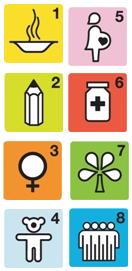
|
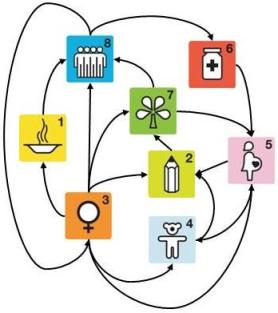
| |
1a. MDGs as a non-system
|
1b. MDGs as a system
|
Figure 1. Global Scenario and Causal-Loop Structure of the MDGs
The global scenario of increasing globalization and lagging egalization is common for any analysis of the MDGs. This is shown at the top of Figure 1. In Figure 1a, the MDGs are presented as if they were independent of each other. In Figure 1b, they are presented as a network of interconnections (the directional arrows) to account for the ways they influence each other. Keeping in mind the general social context of globalization with lagging egalization, it is noted that MDG8 is driven by MDG3. It is also noted that MDG3 drives MDG1, MDG2, MDG4, MDG5, and MDG7. The rationale is this: lagging egalization is due to the persistence of competition rather than cooperation, violence rather than peace, decisions made for self-interest without consideration of the common good.
Gender inequality is the most pervasive expression of the hierarchical, non-egalitarian mindset that induces violence. Therefore, overcoming gender inequality (as we have shown in other ways in previous issues of this newsletter) is the most crucial driver for the MDGs. As long as gender inequalities persist, all the MDGs suffer including MDG6 which is driven by MDG8 and in turn influences MDG5. Eventually, there is a negative feedback loop from MDG8 to MDG3. This feedback is making people increasingly aware of the criticality of MDG3, but the corrective influence is still weak. Thus gender equality is the most crucial gateway to all the other MDGs. The bottom line is that, as long as cross-gender solidarity does not improve, the humiliations induced by gender inequality will sustain the egalization lag while globalization keeps going full speed ahead.
|
Lindner's "Theory of Humiliation"
"Humiliation is about putting down and holding down .... Based on many years of research on humiliation, I would suggest that feelings of humiliation come about when deprivation is perceived as an illegitimate imposition of lowering or degradation, a degradation that cannot be explained in constructive terms .... I define humiliation as enforced lowering of a person or group, a process of subjugation that damages or strips away pride, honor, or dignity. To be humiliated is to be placed, mostly against one's will and often in a deeply hurtful way, in a situation that is greatly inferior to what one feels one should expect. Humiliation entails demeaning treatment that transgresses established expectations. The victim is forced into passivity, acted upon, and made helpless .... Cycles of humiliation occur when feelings of humiliation are translated into acts of humiliation" (Lindner, pages 3, 171-172).
| |
The theory of humiliation is thus a theory about human and organizational behavior. Humiliations, says Lindner, are "the nuclear bomb of the emotions", and frequently lead to "cycles of humiliation". In other words, they often induce "cycles of violence." It is not a matter of whether or not it should be this way. Based on the available objective evidence, this is just the way it is.
5. Obstacles to Pursue the MDGs
As Lindner and others have pointed out, the most important obstacle to the MDGs is violence is all its forms. Gender violence, in the form of various gender inequalities, is the most pervasive form of violence. This is true in both society and religion. There is increasing awareness that the religious variant of gender abuse is even worst (and more resilient) than the social variant. Consider the following announcement:
CONFERENCE ON RELIGIOUS CULTURE & GENDER ETHICS
The idea that "men are superior to women" or "women are inferior to men" prevails in the doctrine and ritual action of most religions around the world, which makes religious groups become a tremendous obstacle in the process of constructing a society with gender equality. Therefore, it is really imperative for us to examine the gender discrimination phenomenon in different religions around the world and ascertain the reason for it in an objective manner. Hence, the theme of this conference is entitled Religious Culture & Gender Ethics. Moreover, scholars and experts in religion and gender studies from the U.S., Canada, Australia, England, Japan, Thailand, India, Singapore and Taiwan are invited to present research papers or deliver keynote speech for the theme of this conference. Location: Buddhist Hongshi College, Taiwan. Conference Date: 2007-11-24. Point of contact: 2007 International Conference on Religious Culture & Gender.
| |
Indeed, gender matters, and therefore gender violence is a key factor in suppressing the process of egalization. Social stress intensifies if globalization and egalization are "out of sync." Lindner writes:
"If we imagine the world as a container with a height and a width, globalization addresses the horizontal dimension, the shrinking width. Egalization, on the other hand, concerns the vertical dimension. Egalization would mean that the container would no longer be a tall one, with masters at the top and underlings at the bottom; instead, we would have a flat container with everybody at about the same height of equal dignity. Globalization and egalization, together, describe a shrinking of our "world," both horizontally and vertically. Globalization occurs "automatically," propelled by technology, but egalization requires deliberate and committed ideological decisions. Globalization can very well occur without egalization. This is precisely what appears to be happening at present when we consider that the gap between the rich at the top and the poor at the bottom is growing, both locally and globally. Globalization without egalization is a story of the contained getting narrower and higher instead of flatter.
"Globalization moves us from the arrogant belief that the planet has an infinite biosphere to be exploited and that there are always more villages to conquer and subjugate to the humble realization that Homo sapiens inhabits one single global village on a tiny planet. The second transition, egalization, pits those who believe that humiliation is an "honorable duty" against those who see it as a violation of dignity. Both transitions push away from arrogance toward humility - a great source of hope. However, when the transition does not occur smoothly, especially in situations that place different world views in opposition, humankind experiences great stress. Feelings of humiliation in the less privileged, which elites typically overtook for too long, only to panic when it was too late, heat to the boiling point. The transitions are too slow to put us on guard and too fast for safety. They permeate the relations between all citizens of the earth, international relations, our relationships with our friends and family, even how we feel about ourselves." (Lindner, page 167)
| |
In other words, the world is becoming smaller and flatter due to population growth, globalization, and egalization. The probability of humans avoiding conflict by avoiding interaction is decreasing. Population growth is inevitable especially among the poor, for whom the bed is the only consolation. Globalization is inevitable, and practically impossible to manage as long as competition is not replaced by cooperation. Egalization is humanity's hope for the future, let alone a better future. The task facing us now is to remove the obstacles along the path to egalization. This must be done locally, nationally, and globally; and must be done democratically and without violations of human rights. It is not possible to consider all obstacles in this space. Table 3 attempts to summarize the main ones:
| MDGs
| OBSTACLES
| | MDG1
|
| | MDG2
|
| | MDG3
|
| | MDG4
|
| | MDG5
|
| | MDG6
|
| | MDG7
|
| | MDG8
|
| | ALL MDGs
|
- Violence and, especially, gender violence.
- The lack of peace in most of the world, and especially the war in Iraq (violence begets violence).
- Delays in reforming the United Nations, the World Bank, and the International Monetary Fund.
- "Resources going from the poor to the rich, pollution going from the rich to the poor" (Vandana Shiva)
|
Table 3. Summary of Obstacles to Pursue the MDGs
6. Incentives to Pursue the MDGs
The obstacles listed in the previous section provide good hints for the incentives needed. Since making progress toward the MDGs is mostly a matter of removing obstacles, it follows that incentives to remove the obstacles should be a high priority. Thus, if the principal obstacle is violence, the principal incentive must be rewards (including financial rewards) for keeping the peace. And, if the principal form of violence is gender violence, the need is for incentives (both carrots and sticks) to overcome all forms of gender violence and gender discrimination in social and religious institutions. As Evelin Lindner has pointed out (page 173), "engaging in the blame game does no good while the ship is sinking." Removing obstacles is not an exercise in finger-pointing. It is a "joint search for a better solution and united building of a better future." (Lindner, page 175). It is not possible to consider all possible incentives in this space. Table 4 attempts to summarize the main ones:
| MDGs
| INCENTIVES
| | MDG1
|
- Replace the culture of violence with a culture of peace. Resources:
- Assurance that financial aid will reach the poor. To bypass the corruption while insuring that financial aid actually reaches the poor, cancel development funds channeled via corrupt governments, and replace them by direct "group to group" development projects.
| | MDG2
|
- Empowering girls and women through education.
- Educating children about the human rights of both men and women in all dimensions of private and public life.
- Educating children about taking good care of the human habitat.
- Educating children about the evils of violence and the blessings of non-violence.
| | MDG3
|
- The "triple dividend" of guaranteeing women’s rights
- Elimination of privileges and heavy taxation for businesses and other secular institutions that perpetuate exclusivist and/or abusive practices that are incompatible with human rights.
- Elimination of subsidies and heavy taxation for religious institutions that perpetuate exclusivist and/or abusive practices that are incompatible with human rights.
- Promotion of women to roles of authority -- in both secular and religious institutions.
| | MDG4
|
- Make contraceptives available to the poor, especially poor women. The responsible use of contraceptives reduces unintended pregnancies and infant mortality.
- Given assurance about financial aid reaching the intended destination, ensure financial aid is used to make available adequate children healthcare resources.
| | MDG5
|
- Make contraceptives available to the poor, especially poor women. The responsible use of contraceptives reduces unintended pregnancies and maternal mortality.
- Given assurance about financial aid reaching the intended destination, ensure financial aid is used to make available adequate maternal healthcare resources.
| | MDG6
|
- Make contraceptives available to the poor, especially poor women. The responsible use of contraceptives reduces unintended pregnancies and the spread of sexually transmitted infections such as HIV/AIDS.
- Given assurance about financial aid reaching the intended destination, ensure financial aid is used to make available adequate healthcare resources to mitigate epidemics such as HIV/AIDS, malaria, and tuberculosis.
| | MDG7
|
- Given assurance about research funding reaching the intended destination, develop research programs pursuant to better understanding of the Dynamics of Coupled Natural and Human Systems.
- Develop pollution standards by industry and legislate heavy taxation for polluting industries.
- Reduce extravagant consumption and wealth accumulation, and improve distributive and environmental justice, by adequate and fair tax systems based on both annual income and accumulated wealth. A sensible solution has been proposed by Cobley George.
| | MDG8
|
- Assurance (audited by the UN) that financial aid bypasses corrupt governments to reach the poor.
- Democratically expedited reforms of the United Nations, the World Bank, and the International Monetary Fund.
- Universal use (democratically legislated) of productivity, safety, environmental, and social responsibility standards such as ISO-9000, ISO-14000, ISO-18000, and ISO-26000
| | ALL MDGs
|
- Work for both social justice and environmental justice. Justice is an indispensable infrastructure for sustainable peace.
- A sustainable peace is indispensable to attaining any of the MDGs, and especially MDG8.
|
Table 4. Summary of Incentives to Pursue the MDGs
7. Web Resources & Knowledge Taxonomy
This section is a digest of recently added/updated web resources, under three categories:
- Information & knowledge content (usually in the form of e-books available for free download)
- Web sites & other resources (new/upgraded web sites, data bases, other tools)
- Evolution of SSNV knowledge taxonomy & links directory (summary here, full directory in a separate page)
Information & Knowledge Content
2007 CORRUPTION PERCEPTIONS INDEX (CPI), Transparency International, 2007. Excerpt: "The 2007 Corruption Perceptions Index looks at perceptions of public sector corruption in 180 countries and territories - the greatest country coverage of any CPI to date – and is a composite index that draws on 14 expert opinion surveys. It scores countries on a scale from zero to ten, with zero indicating high levels of perceived corruption and ten indicating low levels of perceived corruption. A strong correlation between corruption and poverty continues to be evident." Several maps and tables that show the "geography of corruption" are free downloads.
WORLD ECONOMIC SITUATION AND PROSPECTS 2007, United Nations, WESP, 2007. Excerpt: "The outlook remains mostly positive for developing countries, but a degree of moderation is also expected. Sustained high growth in China, India and a few other major emerging economies seems to have engendered synergy among developing countries so that growth in this group is more endogenous. However, a large number of developing countries remain highly vulnerable to the vicissitudes of commodity prices and the volatility of international financial markets. The report highlights the need for greater employment growth, which has not kept pace with output growth. The global economic outlook also encompasses a number of important downside risks: bursts in the housing bubbles in a number of countries, uncertainties in oil prices and mounting global imbalances. The report calls for international macroeconomic policy coordination in order to facilitate an orderly adjustment of global imbalances." The following are free PDF downloads: the
Executive Summary, a
Global Outlook, and the
Full Report
WORLD ECONOMIC AND SOCIAL SURVEY 2007: DEVELOPMENT IN AN AGEING WORLD, United Nations, WESS, 2007. Excerpt: "Greater longevity is an indicator of human progress in general. Increased life expectancy and lower fertility rates are changing the population structure worldwide in a major way: the proportion of older persons is rapidly increasing, a process known as population ageing. The process is inevitable and is already advanced in developed countries and progressing quite rapidly in developing ones. The 2007 Survey analyses the implications of population ageing for social and economic development around the world, while recognizing that it offers both challenges and opportunities. Among the most pressing issues is that arising from the prospect of a smaller labour force having to support an increasingly larger older population." Free PDF downloads by chapter.
EXCLUSION, GENDER, AND EDUCATION: CASE STUDIES FROM THE DEVELOPING WORLD, Center for Global Development, September 2007. Excerpt: "Girls have achieved remarkable increases in primary schooling over the past decade, yet millions are still not in school. In Inexcusable Absence, CGD visiting fellows Maureen Lewis and Marlaine Lockheed reported the startling new finding that nearly three-quarters of out-of-school girls belong to minority or otherwise marginalized groups. This companion volume further analyzes school enrollment, completion and learning with case studies in seven countries. The technical analysis addresses the role of ethnic and linguistic heterogeneity in explaining differences across countries in school enrollment." Another good report from CGD: Inexcusable Absence: Why 60 Million Girls Still Aren't In School and What to do About It. Free PDF downloads by chapter.
GLOBAL ADAPTATION: THE POST-2012 FRAMEWORK, Hans JH Verolme, WWF, Conference on Climate Changes hold in Rome (Italy), 12-13 September 2007 (free download powerpoint presentation). Excerpt: "If we are to prevent dangerous climate change global emissions will need to peak within the next decade. A fair and equitable post-2012 UN agreement is needed that significantly reduces fossil fuel emissions from industrialized countries, provides strong incentives for investment in clean energy technology, putting emerging economies on a low-carbon growth path, stops forest loss; and builds resilience in nature and people to adapt to climate change. This requires countries to resolve fundamental questions of governance, establish clear policy frameworks for finance and technology transfer, halt unsustainable land use practices, and invest in both human and natural infrastructure."
GLOBAL ENVIRONMENTAL OUTLOOK 4 (GEO-4), UNEP, September 2007, 576 pages. From the UNEP announcement: "The fourth report in the Global Environment Outlook (GEO) series from the United Nations Environment Programme (UNEP) provides a comprehensive, scientifically credible, policy-relevant and up-to-date assessment of, and outlook for, the state of the global environment. GEO-4 is published 20 years after the landmark World Commission on Sustainable Developments Bruntland Report of 1987. Environment for Development is the GEO-4 underlying theme and the report pays special attention to the role and impact of the environment on human well-being as well as to the use of environmental valuation as a tool for decision-making. GEO-4's specialized report, the Summary for Decision Makers is an essential guide for policy-makers. Both publications are excellent tools for teaching and research and relevant in the field of international environmental governance as they highlight policy opportunities for a more sustainable approach to economic growth and development."
GENDER INEQUITY IN HEALTH, WHO, September 2007, 145 pages. From the policy briefing: "Gender inequality damages the physical and mental health of millions of girls and women across the globe, and also of boys and men despite the many tangible benefits it gives men through resources, power, authority and control. Because of the numbers of people involved and the magnitude of the problems, taking action to improve gender equity in health and to address women’s rights to health is one of the most direct and potent ways to reduce health inequities and ensure effective use of health resources. Deepening and consistently implementing human rights instruments can be a powerful mechanism to motivate and mobilize governments, people and especially women themselves."
HUMAN DEVELOPMENT REPORT 2007 (HDR2007), UNDP, November 2007. From the UNDP website: "Human development is about putting people at the centre of development. It is about people realizing their potential, increasing choice and enjoying the freedom to lead the lives they value. Created in 1990, the Human Development Report has explored themes including gender equity, democracy, human rights, globalization, cultural liberty and water scarcity. Climate change is the greatest challenge facing humanity at the start of the 21st Century. Failure to meet that challenge raises the specter of unprecedented reversals in human development. The world’s poorest countries and poorest people will bear the brunt. The past years have witnessed the emergence of a growing consensus on climate change. Governments across the world have seen the warning signs. The science linking global warming to human activity is unequivocal. The economic case for action is compelling: the costs of inaction will heavily outweigh the costs of action. Yet the politics lags behind the science and the economics." The Human Development Report 2007 will be launched in November. The currently available downloads are the HDR2007 FLYER and the HDR2007 Leaflet.
ATLAS: NURSES IN MENTAL HEALTH 2007, WHO, 2007, 76 pages. From the Executive Summary: "In general, there are fewer mental health nurses per capita in low income countries, and the level of training in low and middle income countries is usually lower than in high income countries. There are also fewer community mental health facilities in low and middle income countries. However, nurses have more authority to initiate and renew medication prescriptions in countries in Africa, South-East Asia and the Western Pacific. Comments in response to the open-ended questions also suggest that the overall nursing shortage is a factor in explaining insufficient numbers of nurses in mental health. Respondents say that this shortage is even more acute for nurses in mental health because of the lack of incentives for nurses to be trained to provide mental health services. There are few financial incentives for nurses either to receive mental health training or to provide mental health services. The stigma of mental illness also contributes to this problem by limiting the number of nurses willing to make mental health nursing a career."
MILLENNIUM DEVELOPMENT GOALS REPORT 2007, United Nations, July 2007, 21 pages (free download). For each of the MDGs, graphics and supporting text are provided for targets and indicators to show progress from 1990 to 2005 (2004 or 2006 in some cases). From the report summary:
"This report presents data on progress towards the Millennium Development Goals for the world as a whole and for various country groupings. These are classified as “developing” regions, the transition economies of the Commonwealth of Independent States (CIS) in Asia and Europe, and the "developed" regions. The developing regions are further broken down into sub-regions:
- Developed regions (Europe, USA/Canada, AU/NZ)
- Countries of the Commonwealth of Independent States (CIS)
- Northern Africa
- Sub-Saharan Africa
- South-Eastern Asia
- Oceania
- Eastern Asia
- Southern Asia
- Western Asia
- Latin America & the Caribbean
These regional groupings are based on United Nations geographical divisions, with some modifications necessary to create, to the extent possible, groups of countries for which a meaningful analysis can be carried out. A complete list of countries included in each region and sub-region is available at mdgs.un.org."
| |
Web Sites and Other Resources
INFOLIT GLOBAL: INFORMATION LITERACY RESOURCES DIRECTORY, UNESCO & IFLA, 2007. Objective as stated in the website: "The goal of the study is to identify what has been done in regard to Information Literacy (IL) around the world, and the actions that are required at international level to create an international literacy agenda for citizens of all walks of life. The proposed outcome is a schematic report, a database and a website: 1. Report. To prepare a state of the art report on information literacy (IL) at international level, exploring IL developments and challenges in the different continents. 2. Database. To identify IL tools, and outcomes that could be relevant to the international community. 3. Website. To create a website with the results of the identified/recorded IL tools so that they can be promoted by UNESCO and IFLA."
DEVELOPMENT FOR ALL: BUILDING A GLOBAL COMMUNITY THAT WORKS WELL FOR ALL, Lisinka Ulatowska et al, 2007. Focus on MDG8. Summary: "Development as an individual and as a species requires us to both survive and thrive without harming others. Mere survival is not enough. We each have a basic need to thrive in our own ways. And when we do not succeed to find the necessary meaning in our lives, we tend in vain to fill the inner void with substitutes, such as power, status, by overindulging, or competing for ever scarcer resources. These futile attempts then result in downward spirals of depression, aggression, conflict, the raping of the environment and other harmful behaviours. In our interdependent global world these have resulted in global problems which threaten both people and the environment, regardless of who we are or where we live. Development can be sustainable to the degree we can create a global community that works well for all."
UNDP-UNEP POVERT-ENVIRONMENT INITIATIVE (PEI), UNDP & UNEP, 2007. Summary: "Based upon experience over the past few years in assisting nine countries in Africa and Asia to launch sustainable programmes to mainstream poverty-environment into national development plans, budget processes and sector implementation programmes, UNDP and UNEP have launched an effort to scale-up the PEI significantly and to work closely with key donors and other partners to expand the effort to other countries and regions. An increased number of country programmes will be supported by joint UNDP-UNEP regional teams and by the headquarters of the two organizations."
HEALTH AND DEMOGRAPHIC SURVEILLANCE SYSTEM (MATLAB DEMOGRAPHIC HANDBOOK), ICDDRB, 2007. Summary: "The Matlab Demographic Workbook is an easy to use, interactive Excel file that houses data for all demographic events occurring in Matlab since 1983. The information is indexed by area (ICDDRB area and Government services area), year, sex and age group. Users can enquire about any of the demographic events by a specific year or assess trends over time. The workbook, which accommodates data to 2020, will be updated once annually with the most recent demographic events." For a free download, click HERE.
URBANIZATION AND GLOBAL CHANGE, Global Change, University of Michigan, 12 September 2007. This website provides the latest trends on global urban population in developed and developing countries: "The human population has lived a rural lifestyle through most of history. The world’s population, however, is quickly becoming urbanized as people migrate to the cities. Figure 1 shows the urban population growth between 1950 and the year 2000. In 1950, less than 30% of the world’s population lived in cities. This number grew to 47% in the year 2000 (2.8 billion people), and it is expected to grow to 60% by the year 2025."
GENDER, INSTITUTIONS, AND DEVELOPMENT DATABASE (GID-DB), OECD, 2007. From the website intro: "The Gender, Institutions and Development Data Base (GID-DB) represents a new tool for researchers and policy makers to determine and analyze obstacles to women’s economic development. It covers a total of 161 countries and comprises an array of 60 indicators on gender discrimination. The data base has been compiled from various sources and combines in a systematic and coherent fashion the current empirical evidence that exists on the socio-economic status of women. Its true innovation is the inclusion of institutional variables that range from intrahousehold behaviour to social norms. Information on cultural and traditional practices that impact on women’s economic development is coded so as to measure the level of discrimination."
Knowledge Taxonomy & Links Directory
The SSNV links directory is a relational database with seven columns: item numbers, mega-disciplines, disciplines, specialties, subspecialties, MDGs, and link to the knowledge content website. There are 11 mega-disciplines (the so-called "pillars of knowledge), 77 disciplines, and 402 specialties currently identified. The specialties and subspecialties columns are currently being used to capture the institutional source of the information and acronyms useful for searching. Click here to view the current status of the knowledge links database sorted by mega-disciplines and MDGs.
Needless to say, this database will never be finished, but the reader is invited to download the table, try other sortings, and otherwise adapt the entries to other projects. You can either download the HTML page (simply save the page and edit the HTML code - recommended if you are well versed in HTML), or you can download the excel file that contains the entire table (including embedded HTML and instructions to add/delete items and rebuild the HTML page (this is the recommended option unless you want to make extensive formatting modifications). Readers are also encouraged to submit relevant links via email to the editor.
NOTE
To get the SSNV links database excel file,
click HERE.
8. Prayer, Study, and Action
The following poem, known as the "Prayer of St. Francis," encapsulates prayer, study, and action: prayer to become an instrument of divine love, discernment of God's will, and desire to do what God desires us to do.
Lord, make me an instrument of Thy peace;
where there is hatred, let me sow love;
where there is injury, pardon;
where there is doubt, faith;
where there is despair, hope;
where there is darkness, light;
and where there is sadness, joy.
O Divine Master,
grant that I may not so much seek to be consoled
as to console;
to be understood, as to understand;
to be loved, as to love;
for it is in giving that we receive,
it is in pardoning that we are pardoned,
and it is in dying that we are born to eternal life.
Amen.
St. Francis of Assisi - 13th Century
9. Links to Archived Newsletters
The following are links to previous issues of the newsletter:
V1 N1 May 2005: Cross-Gender Solidarity
V1 N2 June 2005: The Phallocentric Syndrome
V1 N3 July 2005: From Patriarchy to Solidarity
V1 N4 August 2005: Synthesis of Patriarchy and Solidarity
V1 N5 September 2005: From Solidarity to Sustainability
V1 N6 October 2005: Dimensions of Sustainability
V1 N7 November 2005: Analysis and Synthesis of Objective Evidence
V1 N8 December 2005: Solidarity, Subsidiarity, and Sustainability
V2 N1 January 2006: Synthesis of Solidarity and Sustainability
V2 N2 February 2006: Sustainable Human Development
V2 N3 March 2006: Patriarchy and Mimetic Violence
V2 N4 April 2006: Mimetic Violence in Patriarchal Religions
V2 N5 May 2006: Mimetic Violence in Patriarchal Religions 2
V2 N6 June 2006: Mimetic Violence in Patriarchal Religions 3
V2 N7 July 2006: Mimetic Violence in Patriarchal Religions 4
V2 N8 August 2006: Mimetic Violence in Patriarchal Religions 5
V2 N9 September 2006: Sabbatical Activity ~ September 2006
V2 N10 October 2006: Sabbatical Activity ~ October 2006
V2 N11 November 2006: Sabbatical Activity ~ November 2006
V2 N12 December 2006: Sabbatical Activity ~ December 2006
V3 N01 January 2007: MDG1: Eradicate Extreme Poverty
V3 N02 February 2007: MDG2: Universal Primary Education
V3 N03 March 2007: MDG3: Promotion of Gender Equality
V3 N04 April 2007: MDG4: Reduction of Child Mortality
V3 N05 May 2007: MDG5: Maternal Care Improvement
V3 N06 June 2007: MDG6: Contain the HIV/AIDS Epidemic
V3 N07 July 2007: MDG7: Ensure Environmental Sustainability
V3 N08 August 2007: MDG8: Global Partnership for Development
V3 N09 September 2007: Integrated Analysis of the U.N. MDGs
V3 N10 October 2007: Feasibility of the 2015 MDG Targets
Everyone for Peace
Below is an image of Luis Haro's beautiful painting, Todos por la Paz.
Todos por la Paz
Everyone for Peace
Chacun pour la Paix
Todos para a Paz
Tutto per Pace
Jeder für Frieden
Luis Haro Dominguez, Uruguay
USED WITH PERMISSION
This artwork, by Luis Haro Dominguez from Uruguay, came to Mennonite World Conference Assembly, Bulawayo, Zimbabwe, August 2003, by way of the delegation from Latin America. It was one of many displayed at the Global Village during that week-long event. 'Todos por la paz'/'Everyone for peace,' are the words that the artist used with the painting, depicting the universal longing for shalom.
|Back to SUMMARY|
|Back to OUTLINE|
|Back to SECTION 1|
|Back to SECTION 2|
|Back to SECTION 3|
|Back to SECTION 4|
|Back to SECTION 5|
|Back to SECTION 6|
|Back to SECTION 7|
|Back to SECTION 8|
|Back to SECTION 9|
|Link to Newsletter Home Page|
|Link to Invited Paper|
|
The Pelican Symbol
|
![[pclogo]](pclogo.gif)
The pelican is a legendary symbol of commitment to the service of others, especially those who are weak and most vulnerable to physical and/or psychological violence. See
The Physiologus,
The Symbolism of the Pelican,
Adoro te devote ...,
and a very instructive sermon by Rev. Sylvia Roberts.
Pie Pelicani (Holy Pelican)
The myth is one of a mother pelican who, in order to feed her young, rips a hole in her breast and feeds them of her own flesh and blood. The ancients saw in it a marvelous feminine image of Christ as Mother. Her wings encompass all from Lazarus and Dives to the wedding feast and the bridal couple keyed in the arch as Christ's love shared in the Eucharistic meal embraces us all. Loyola Chapel, Concordia Univ.
![[solidarity01]](solidarity01.gif)
A Symbol of Solidarity
![[sustainability01]](sustainability01.gif)
A Symbol of Sustainability
![[nonviolence01]](nonviolence01.jpg)
A Symbol of Non-Violence
| |
Religious Traditions
![[religions1]](religions1.jpg)
Unity in Diversity
World Religions
|
The following are links to information about some of the major religious traditions and approximate numbers of adherents:
Christianity (2.5 billion)
Islam (1.4 billion)
Hinduism (1 billion)
Buddhism (375 million)
Sikhism (23 million)
Judaism (14 million)
Bahá'í (7 million)
For more information, see World Religions, which includes global maps showing geographic religious distributions.
| |
SSNV Call for Papers
|
This newsletter is now seeking scholars willing to write (pro-bono) short articles about the impacts of all forms of secular and religious violence on human solidarity and ecological sustainability, as well as critical reviews of this work from the perspective of various religious traditions, i.e., Christianity, Buddhism, Judaism, Islam, Hinduism, Sikhism, Bahá'í, etc.
Articles should be 1000 words minimum and 5000 words maximum. Please submit only material that has not been already published elsewhere. The author's CV should be submitted with the paper. The newsletter is published monthly, but there are no specific deadlines. Papers approved by the editor will be included as an "invited paper" when time and space allows.
Email your submission to the editor, Luis T. Gutierrez.
| |
Memorable People
![[ahha.russian]](ahha.russian.jpg)
![[Anna.Politkovskaya]](Anna.Politkovskaya.jpg)
Anna Politkovskaya
Born in New York City, USA,
30 August 1958
Died in Moscow, Russia,
7 October 2006
Anna Politkovskaya was shot dead in the elevator of her apartment building, reportedly in retaliation for her prominent work as a human rights activist and her well known opposition to the war in Chechnya and the government of Russian president Vladimir Putin. For more information:
Anna Politkovskaya, Wikipedia
Anna Politkovskaya's assassination
Anna Politkovskaya, Economist
Red October: Killing the Truth in Moscow
Anna Politkovskaya (1958-2006)
Model of Non-Violence
![[nelsonmandela]](nelsonmandela.jpg)
Nelson Mandela
South Africa (Born 1918)
Prisoner, 1962-1990
Nobel Peace Prize, 1993
President, 1994-1999
Quote:
"In my country we go to prison first
and then become President"
Nelson Mandela spent 27 years in jail when South Africa was still under the "apartheid" system of white supremacy. Upon release, he followed the path of reconciliation rather than revenge, and founded the South Africa's "Truth and Reconciliation Commission" to facilitate the non-violent transition from minority rule (apartheid) to democracy.
For more information:
Nelson Mandela (Wikipedia)
Long Walk to Freedom (Autobiography)
Nelson Mandela Foundation
African National Congress
Writings of Nelson Mandela
The Mandela Page
Global Citizen
![[Gro.Harlem.Brundtland]](Gro.Harlem.Brundtland.gif)
Gro Harlem Brundtland
Born in Oslo, Norway, 20 April 1939
Chair, U.N. World Commission on Environment and Development, 1983-1987
Prime Minister of Norway, 1986-1996
WHO Director General, 1998-2003
It was Dr. Brundtland who coined the term "sustainable development" as "development which meets the needs of the present without compromising the ability of future generations to meet their own needs", 'Our Common Future' (The Brundtland Report), 1987.
For more information:
Gro Harlem Brundtland - Biography
Gro Harlem Brundtland - Biography
Report of the World Commission on Environment and Development, U.N. General Assembly, 11 December 1987
Sustainable Development and its Global Significance, International Sustainability Conference, Basel, 13-14 October 2005
Brundtland: 'A climate-friendly future is possible', Credit Suisse, 2003
1999 Fridtjof Nansen Memorial Lecture
Sign of the Times
![[revchristinakukuk]](revchristinakukuk.jpg)
Rev. Christina Kukuk
Senior Pastor,
First Congregational
United Church of Christ
Elyria, Ohio
Hillary for President
![[hillary-october]](hillary-october.jpg)
Wife, Mother, Lawyer, Stateswoman
Senator from New York
Next President of the USA
Want to know why Hillary is
the best choice for president?
Watch the Videos
Worth Visiting
The following sites are worth visiting:

DNA - The Double Helix Game
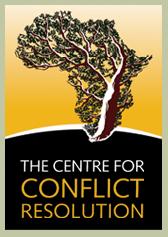
Centre for Conflict Resolution
South Africa

Micah Challenge
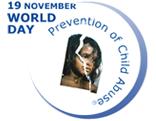
NOVEMBER 19, 2007
CHILD ABUSE PREVENTION DAY
Women's World Summit Foundation
Sponsored by WWSF

Intute: Comprehensive Web Resources
for Education and Research

The Online Books Page
25,000+ free books on the Web

Directory of Open Access Journals
2800+ journals, 140000+ articles

Nature
Weekly Journal of Science
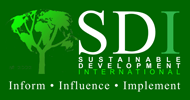
Sustainable Development International

U.N. Development Program
|

U.N. Environmental Program
|

"Engaging in the blame game does no good
while the ship is sinking."
Evelin Lindner
Humiliation in a Globalizing World

Socioeconomic Democracy
Robley C. George, Director
Center for the Study of Democratic Societies

Network of those Abused by Church (NAC)
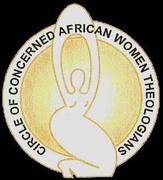
The Circle of Concerned
African Woman Theologians
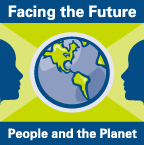
Facing the Future
K-K12 Education Materials

MDG Toolkit
United Nations Development Group
Five modules:
1. Millennium Declaration and the MDGs
2. Operationalising the MDGs
3. Monitoring and Reports
4. Advocacy and Campaigning
5. MDG Needs Assessment and Financing Analysis
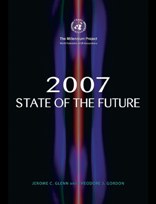
The State of the Future (SOF), by Jerome C. Glenn and Theodore J. Gordon, is the flagship publication of the Millennium Project. Published annually since 1996, it is rich in carefully researched content, including: Outlook on 15 Global Challenges, Education & Learning 2030, 700 Annotated Scenario Sets, State of the Future Index, Environmental Security.
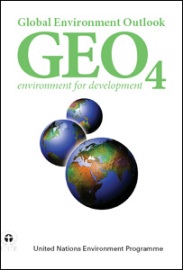
General Environmental Outlook 4
UNEP, September (October?) 2007
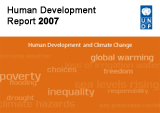
Human Development Report
UNDP, October (November?) 2007

TeachGlobalEd (K-12)
Online Resources for Global Educators
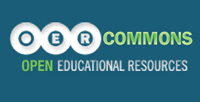
OER Commons provides open educational resources for teaching and learning that are freely available on-line for everyone to use, whether you are an instructor, student, or self-learner.

A Platform for the Communication of Science, Research & All Fields of Study between the Scientists and Researchers of the Developing and Developed Worlds.

AIDSPortal is an internet platform which provides tools to support global collaboration and knowledge sharing among new and existing networks of people responding to the AIDS epidemic.

Baobabconnections presents:
the Why MDGs competition
How can you make this world a better place?
Enter your rap lyric, poem, essay or short video and win 1000 Euro!
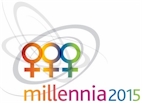
Millennia 2015 Process

Going toward an inverted
population pyramid
Announcements
and CFPs
LEADERSHIP & MANAGEMENT IN SUB-SAHARAN AFRICA
Accra, Ghana, 7-9 July 2008. Conference paper submissions are being accepted, and information is available at conference website. The keynote speakers will be Prof Stella Nkomo, Bateman Professor of Business Leadership at the University of South Africa, Graduate School of Business Leadership, Pretoria, and Prof Terence Jackson, Business & Management Group, Middlesex University Business School, London.
RELIGIOUS CULTURE & GENDER ETHICS
The idea that "men are superior to women" or "women are inferior to men" prevails in the doctrine and ritual action of most religions around the world, which makes religious groups become a tremendous obstacle in the process of constructing a society with gender equality. Therefore, it is really imperative for us to examine the sex-discrimination phenomenon in different religions around the world and ascertain the reason for it in an objective manner. Hence, the theme of this conference is entitled Religious Culture & Gender Ethics. Moreover, scholars and experts in religion and gender studies from the U.S., Canada, Australia, England, Japan, Thailand, India, Singapore and Taiwan are invited to present research papers or deliver keynote speech for the theme of this conference. Location: Buddhist Hongshi College, Taiwan. Conference Date: 2007-11-24. Point of contact: 2007 International Conference on Religious Culture & Gender.
MANAGING INTERNATIONAL DEVELOPMENT
Special Issue, The Journal of Applied Behavioral Science. We invite submissions to a special issue focused on how organizational development and change (OD&C) is managed in international contexts. Referring to implementation of established change and development models across boundaries and within different cultural contexts, national or geographical settings, and organizations with international, transnational, or multinational memberships, we encourage rich, thick descriptions of how a change process unfolds, how change processes are adapted, how change processes can be evaluated, and how emerging change models can be noted for further development. These descriptions could be supported or underpinned by quantitative data if desired. Please follow JABS guidelines; submit manuscripts by e-mail prior to March 15, 2008, to: Chung-Ming Lau, Jean E. Neumann, Christopher G. Worley.
ICAES 2008
This is the 16th world congress of the International Union of Anthropological and Ethnological Sciences. The theme of the conference is "Humanity, Development, and Cultural Diversity." The conference will take place in Kumming, China, 15-23 July 2008. The points of contact are Prof. Zhang Haiyang and Prof. Zhang Jijiao. Application and registration forms and other information can be obtained from the conference website.
WWWWMM08
Mundos de Mujeres/Women's Worlds 2008 is "the most important congress on
academic research on gender and women and feminist social movements." This major international event will bring together people from all over the world - researchers, specialist, activist and major international public figures to discuss the key issues that impact women. A key goal is to fight against social injustices and gender inequalities. The 2008 interdisciplinary Congress has selected three concepts: frontiers, dares and advancements to address a spectrum of themes and issues that can help us understand the world we live in. Universidad Complutense de Madrid, 3-9 July 2008. Points of contact: Dr. Claudia Malacrida, Dr. Leslie Roman, Conference Secretariat.
SOCIAL SIMULATION CONGRESS
Next year the 2nd World Congress in Social Simulation (WCSS'08) will take place on July 14-16, 2008, at George Mason University, hosted by the Center for Social Complexity, just outside Washington DC. Additional information will follow soon, including the official call for papers, website for early registration, scientific committees, lodging information, and preliminary program. The WCSS series is a joint collaboration of the regional international professional organizations: European Social Simulation Association ESSA; North American Association for Computational Social and Organizational Sciences NAACSOS; and
Pacific Asia Association for Agent Based Social Systems Science PAAA. For more information contact Professor Claudio Cioffi-Revilla, Director of the Center for Social Complexity at George Mason University.
U.S. YOUTH NETWORK FOR
SUSTAINABLE DEVELOPMENT
The SustainUS Agents of Change program is now accepting applications to join the SustainUS youth delegation to the Thirteenth session of the Conference of the Parties to the UN Framework Convention on Climate Change and second meeting of the Parties to the Kyoto Protocol (COP13 and COP/MOP3), which will be held in Bali, Indonesia, from December 3-14, 2007. The SustainUS delegation, comprised of key leaders in the youth climate movement, will have the unique opportunity to represent American youth at the COP, which will determine the future of international policy on climate change. Delegates will work with each other and with international youth in advance of the conference to educate themselves, develop policy priorities, acquire skills in effective lobbying, and engage the broader youth population in a conversation about international climate policy. For more information contact Agents of Change.
SCIENCE, POLICY, AND ENVIRONMENT
Sponsored by the National Council for Science and the Environment (NCSE). January 16-18, 2008. Washington Convention Center, 801 Mount Vernon Place, N.W., Washington, DC 20001. Focus on Climate Change: Science and Solutions Resources. Please direct questions on NCSE's next conference to NCSE 2008 Conference on Climate Change.
GENDER AND WELL-BEING
A symposium on "Gender and Well Being: The Role of Institutions from Past to Present." Madrid, Spain, 25th-27th June 2008. From the CFP: "There are fundamental questions about the origins and nature of individual and social well-being in Europe, as well as on its sustainability. The symposium's aim to develop a new concept of well-being, examining the socially gendered indicators, actors and processes affecting the production and access to well-being across the life-course. This reflection is meant to be conducted at a crossroads between history, social science and economy." Call for papers opened till 20th September 2007.
Send abstracts to Paloma de Villota with copy to the
Secretary by this Form. Selection of abstracts will be made by the end of October 2007 and will be communicated to authors before 15th November 2007. Papers must be sent by e-mail no later than 26th May, 2008.
CHALLENGING THE CULTURE OF DEATH
The aim is a cross-cultural dialogue imagining a political and symbolic world based on life not death: mercy not sacrifice.
"A multi-disciplinary event, we aim to bring diverse approaches to our deliberations under the following headings: Theory, Resistance, and Theology. Priority will be given to those taking a multi-disciplinary synchronic perspective, and imaginative approaches to presenting that maximize pre-event preparation (making papers available in advance) and interactive modes of engagement with participants. We also hope to balance incisive critique with concrete strategies for practical action." Venue: Trinity College, Dublin. Date: 2-4 November 2007. Sponsors: Institute for Feminism and Religion and Centre for Gender and Women’s Studies, Trinity College, Dublin. Please address questions to Mary Condren or Challenging Death.
PEACEFUL COEXISTENCE
International Conference on Peaceful Coexistence, Erasmus University Rotterdam, The Netherlands, 23–24 November 2007. The need for peaceful co-existence between Muslims and non-Muslims within and between nations has long been recognized. The much publicized failures in relations in recent years, which are both a cause and effect of the situation in many parts of the world – not just the Middle East – should spur all right-minded people to re-double their efforts to sustain the hope for peaceful co-existence. For further information please e-mail: Peaceful Coexistence or visit the Peaceful Coexistence Conference web site.
FORMATION OF NEW PUBLICS
Religion has the capacity to form intentional groups and communities as well as to mobilize agents to work for certain goals. This formation of communities and mobilization of resources to achieve goals is actually consonant with the term "formation of publics" as used by C. Wright Mills. This conference will explore the new publics of the 21st century. Publics here may be individuals and/or groups who attempt to create knowledge and/or achieve certain actions using religious ideals, beliefs, and/or symbols. Venue: University of Santo Tomas, Manila. Date: 23-26 January 2008. Deadline for abstracts: 21 July 2007. Enquiries: Esmeralda Sanchez.
BIOLOGY AND RELIGIOUS BEHAVIOR
Call for Papers: "The Biology of Religious Behavior: A Human Ethology Perspective on Religion." Care to spend time in Italy studying psychology and religion? Then consider submitting a paper to the International Society for Human Ethology meeting in Bologna, Italy, July 14-18, 2008. Better yet, there is a possibility for funds to support your travel to Bologna for the conference. Sponsored by the Society of Human Ethology. Bologna, Italy, 14 – 18 July, 2008. The deadline for abstract submission is 1 March 2008. For more information visit the ISHE2008 conference website. Points of contact are Marco Costa, University of Bologna, Italy and Luca Tommasi, University of Chieti, Italy. See also the PsyRel blog of Jay Feierman.
EU GENDER EQUALITY
An expert meeting on gender equality in the enlarged European Union is underway (between July 2006 and September 2007) as part of a current research project on gender equality in the enlarged EU. It is being carried out as a cooperation between Social Change and the Institute of East-European History. The aim is to examine the possibilities, chances and obstacles for the future gender equality policy on the EU level. The discussion in this interdisciplinary and transnational forum will focus on the implementation of the EU’s gender equality regulations, on independent national policies, on the history and role of the women’s (rights) movement and the current situation of women, especially in the new member countries Slovenia, Czech Republic, Hungary and Bulgaria, but also in the "old" member states like Germany, France, and Austria. Points of contact: Petra Ziegler and Verena Kaselitz at the Institut für Osteuropäische Geschichte der Universität Wien, Social Change Institut für Innovation in der Genderforschung und Gewaltprävention.
REPRODUCTIVE & SEXUAL HEALTH
The 4th Asia Pacific Conference on Reproductive and Sexual Health and Rights will take place 29th to 31st October 2007, Hyderabad, India. The conference will provide a platform for people with diverse perspectives, expertise and experience to exchange ideas, discuss and debate issues of concern, and learn from each other about sexual and reproductive health and rights, with specific reference to the implementation of the Programme of Action of the International Conference on Population and Development (ICPD, 1994). The theme of the Conference is "Exploring New Frontiers in Sexual and Reproductive Health and Rights". For more information, please visit our website, 4APCRSH.
POLITICS OF HUMAN TRAFFICKING
CFP by the St. Antony's International Review (STAIR), a peer-reviewed academic journal of international affairs based here at St. Antony's College, University of Oxford. A forthcoming issue of STAIR will focus on the theme of human trafficking. Abstracts due August 30, 2007. Papers due December 30, 2007. A copy of the CFP and other information can be obtained via email to Ms. Heidi Stöckl, Associate Editor, St. Antony's International Review (STAIR).
VIOLENCE IN CLINICAL PSYCHIATRY
This will be the 5th European Congress on Violence in Clinical Psychiatry. Congress theme: "Best Evidence Based Practices on
Prevention, Treatment and Management of Violence at the Individual, Institutional and Governmental Level." 25 - 27 October 2007, 0, Amsterdam. From the invitation: "Violent and aggressive behaviour is a complex phenomenon of great importance in society as well in clinical psychiatry. Violence has become a global problem crossing borders, work settings and occupational groups. Within clinical psychiatry, violence is one of the major obstacles for effective treatment and rehabilitation, and with regard to health care workers, violence is the major occupational health hazard. Therefore a comprehensive institutional approach to this problem at all organizational levels is needed." See the conference website. Point of contact: Nico Oud.
EDUCATION FOR PEACE 2007
Announcing the First International Education for Peace Conference-2007: Strategies for Building a Civilization of Peace at Granville Island in Vancouver, B.C., Canada (14-17 November 2007). The primary goal of the conference is to contribute to the worldwide efforts to create a civilization of peace. Essential to this undertaking is life-long peace education at home, in schools, and in the community, with its focus on the integral role of all members of society-children, youth, and adults-and with the equal participation of women and men in the administration of human affairs. Point of contact: Stacey Makortoff.
Millennium Ecosystem Assessment
Slide Presentation
The Millennium Ecosystem Assessment assessed the consequences of ecosystem change for human well-being. From 2001 to 2005, the MA involved the work of more than 1,360 experts worldwide. Their findings provide a state-of-the-art scientific appraisal of the condition and trends in the world’s ecosystems and the services they provide, as well as the scientific basis for action to conserve and use them sustainably. The following links will enable you to review and retrieve the Millennium Ecosystem Assessment:
FULL REPORTS
SYNTHESIS REPORTS
SLIDE PRESENTATIONS
GRAPHIC RESOURCES
Site Search
![[fusionbot]](fusionbot.gif)
Downloads
SSNV-MDG
Knowledge Taxonomy
and
Links Directory
The taxonomy and database can be downloaded as either an HTML web page or an excel spreadsheet (the html code is embedded in the excel file for ease of modification).
Download
HTML Web Page
Download
Excel Spreadsheet
Donations
Donations are gratefully accepted.
To donate via PayPal:
To donate via Amazon:

|
"Far away in the sunshine are my highest aspirations.
I may not reach them, but I can look up and see the beauty,
believe in them and try to follow where they lead."
Louisa May Alcott (1832-1888)
|
|
|
Page 1
|
|
| |